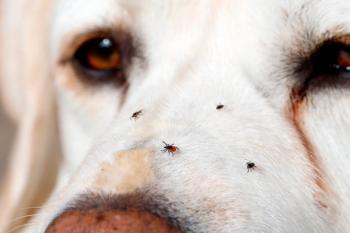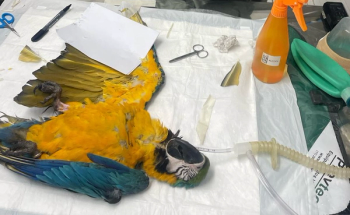
Birth of Sumatran tiger is a boost to critically endangered subspecies
Born in Wales, the cub is a "symbol of hope" for wildlife conservation efforts
Manor Wildlife Park, a zoo in St Florence, Wales, recently announced the birth of Zaza, a Sumatran tiger. The occasion marks the first time a tiger cub has been born in a zoo in Wales and is a significant step towards global wildlife conservation efforts.1
Born on May 25, 2024, Zaza is part of one of the most endangered tiger subspecies in the world. Her recent entrance represents a new achievement for Manor Wildlife Park and wildlife conservation in Wales as Sumatran tigers face grave threats from habitat loss and poaching. Her birth is an emblem of hope, bringing “renewed focus” to the urgency behind the protection of these animals and their natural habitat, according to Manor Wildlife Park.1
"We are overjoyed to welcome Zaza to our family. This birth is a testament to the dedication and hard work of our team, who have worked tirelessly to create an environment where these magnificent animals can thrive. Zaza's arrival is a beacon of hope for the conservation of Sumatran tigers, and we are committed to ensuring she grows up healthy and strong," Rick Newton, animal manager at Manor Wildlife Park, expressed in an organizational release.1
Manor Wildlife Park’s veterinary and animal care teams closely monitored the birth to ensure both the mother and cub received optimal care. According to the zoo, Zaza has been thriving under the attentive care of her mother, Terima, with the 2 of them developing a strong bond since the birth.
The zoo has a conservation program that is committed to advancing worldwide efforts in safeguarding endangered species through breeding programs, habitat conservation, and public education. It is also part of the Sumatran tiger European breeding program, whose objective is to safeguard the future of “the most enigmatic of species,” according to the organization.1 Currently, a male Sumatran tiger named Jaya resides in Manor Wildlife Park alongside Terima, a female counterpart. Both Jaya and Terima arrived from zoos—Chester Zoo in England in 2016, and Beauval Zoological Park in France in 2015, respectively.
According to Manor Wildlife Park, Sumatran tigers are indigenous to the island of Sumatra in Indonesia, preferring the thick forests of the lowland and highland regions. The population of Sumatran tigers in Sumatra, Indonesia has drastically declined due to habitat loss and deforestation, primarily caused by extensive logging and the expansion of agriculture, particularly palm oil plantations.1 From 1985 to 2014, the island of Sumatra faced a decline from 58% to 26% in its forest cover.2
Additionally, illegal hunting poses a significant threat to these tigers given the desire of their skins and the perception of them as a threat to livestock.1 In fact, approximately 80% of Sumatran tiger deaths are caused by poaching for trade, a survey from TRAFFIC, a worldwide trade monitoring network, found.2 As a result, these animals are now critically endangered.1,2 The Sumatran tiger is the sole surviving tiger population in the Sunda Islands in Indonesia, where both the Bali tiger and Javan tiger are now extinct.2
References
- Wales’ first tiger cub. News release. Manor Wildlife Park. July 9, 2024. Accessed July 17, 2024.
https://www.manorwildlifepark.co.uk/sumatran-tigers - Sunda Tiger. World Wildlife Fund. Accessed July 17, 2024.
https://www.worldwildlife.org/species/sunda-tiger#:~:text=Illegal%20Wildlife%20Trade,least%2040%20animals%20per%20year
Newsletter
From exam room tips to practice management insights, get trusted veterinary news delivered straight to your inbox—subscribe to dvm360.






